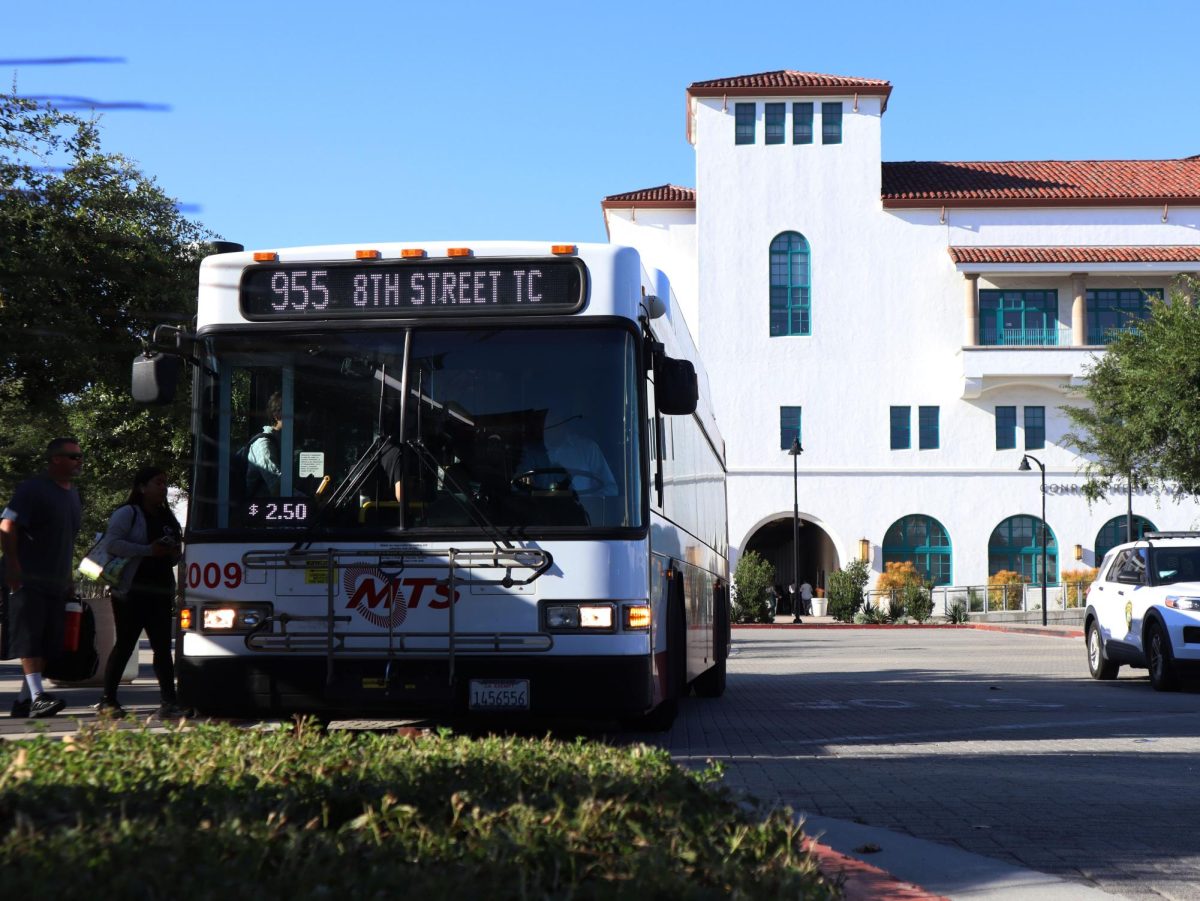The Metropolitan Transit System is adding more train teams, doubling the amount of officers and increasing outreach for homelessness to seven days a week after a passenger satisfaction survey revealed overall safety satisfaction decreased between 2019 and 2022.
According to a MTS press release, the security initiative includes a 60% increase in security officers across the system.
Timothy Curran, the MTS director of Transit Security & Passenger Safety, wrote that implementation has begun, such as setting up security areas at busy transit stops and hiring more code compliance inspectors who can make arrests. He added that MTS hopes to finish hiring these inspectors by September 2024, but “all signs are pointing to being fully staffed ahead of that.”
Some San Diego State University students, such as Noemi Portillo, a fourth-year public relations and English student, said that they have already noticed a difference while utilizing public transit.
Portillo started riding the trolley twice a week from SDSU to downtown San Diego in January, which was when the initiative was approved. She said that she sees more transit security in the trolley cars checking fares, occasionally escorting people off the trolley and waiting for a few stops before getting off the transit themselves.
However, Portillo said that she doesn’t feel particularly unsafe on the trolley because she makes sure to keep to herself.
“I try to make sure I take up as little space as possible,” Portillo said. “So, with my backpack, I’m clutching it and it’s on my lap. I’m looking out the window rather than looking at anybody. It’s really just the procedures that I was taught as a kid when you’re in a public space and you don’t know how people are going to react.”
Although she understands that taking the trolley at night may be a different experience than a morning trip, Portillo encourages more people to take public transit.
“My experience has brought back a sense of belief in public transportation that I feel like a lot of our generation does not have,” Portillo said. “But I think it’s such a useful tool, and a lot of people don’t use it enough. It has been a saving grace for me, personally.”
Not every student shares the same sentiment, though.
Catherine Loiselle, a third-year international business student, travels on the MTS trolleys and buses an average of 10 times a week. Loiselle said that while she hasn’t used the trolley services recently, she hasn’t noticed any transit security increases on her bus routes.
Instead, Loiselle protects herself in other ways.
“I think the scariest time is at night, so I just plan my outfit to look more like a boy on days I come home later,” Loiselle said.
One part of the initiative is a security hotline number, which transit riders can text or call when they feel unsafe on their bus and trolley routes.
According to Curran, there were initially separate numbers available to contact via texts or calls about anything from cleanup requests to safety. Now, there’s one phone number intended for safety purposes.
Despite Loiselle’s accounts of her negative experiences, she never contacted MTS security as she wasn’t aware she could do that.
Loiselle added that she would only feel comfortable with a text or app feature because it would be similar to “calling the police when an intruder is in the house,” as she notes.
In the meantime, SDSU students remain careful on trolley and bus rides.
“That’s an essential part of how I was raised,” Portillo said. “Protect yourself in different situations regardless because you can never let your guard down.”
To learn more about MTS and its latest security initiative, visit their website for additional details and updates.









